The early period, 1983–1997
I started playing music at the age of eleven by attending clarinet lessons at the First Children’s Music School of Kaunas (Lithuania). A few years later, in 1987, I enrolled in Juozas Gruodis’ Higher School of Music (present-day Juozas Gruodis’ Conservatory). I was keen on collecting records that were hard to find back in the day, saving money for sound equipment, DJing in local schools and summer camps, and cracking the sound secrets of such bands and artists as Depeche Mode, Alphaville, A-ha, Erasure, Duran Duran, Eurythmics, Queen, Kate Bush, Annie Lennox, and others.
While finishing my studies at Juozas Gruodis’ Higher School of Music, I founded my first band, Galilėja (Galilee). Although the band lasted just a year (as I was discovering my other major passion in life, philosophy, at the time), we did manage to play several public gigs, and our single Duok ranką (Give Me Your Hand) was aired on M-1, the first commercial radio station in Lithuania.
In 1992, I relocated to the USA to study philosophy and theology at the Franciscan University of Steubenville (Ohio). I then went on to get my MA in philosophy at the International Academy of Philosophy in Liechtenstein (Internationale Akademie für Philosophie). This was a period in my life when I thought I would never make music again. I was completely immersed in academics, with a full-time dedication to what I was learning. Naturally, I barely had any time for anything else.
Pėdsakai, 1997–2000
After earning my postgraduate degree in 1997, I returned to Lithuania. Within a year, I founded the band Pėdsakai (Footprints) along with Linas Šalna on the oboe and keyboards, Mindaugas Milašauskas and Darius Saženis taking turns on the guitar, and myself composing, writing lyrics, and singing.
In 1998, we released our first album, Gyviesiems (For the Living). In 1998–2000, we gave about 40 concerts in Lithuania, attracting a loyal audience but not earning wider recognition. Pėdsakai ceased their activities in 2000, immediately after the recording of the second, unfinished, and unreleased album.
Stylistically, we welded electronic sounds with acoustic instruments. One could easily hear sonic vestiges of Depeche Mode and Queen in the band’s music. Our songs were permeated with romanticism, as this term is understood in art history. The creative impetus was to reclaim a world of feelings and imagination that is a little more spacious and deeper than what is usual and mundane in life. Could this be achieved with modern, mostly programmable synthesizer arrangements? We believed—yes, it could!
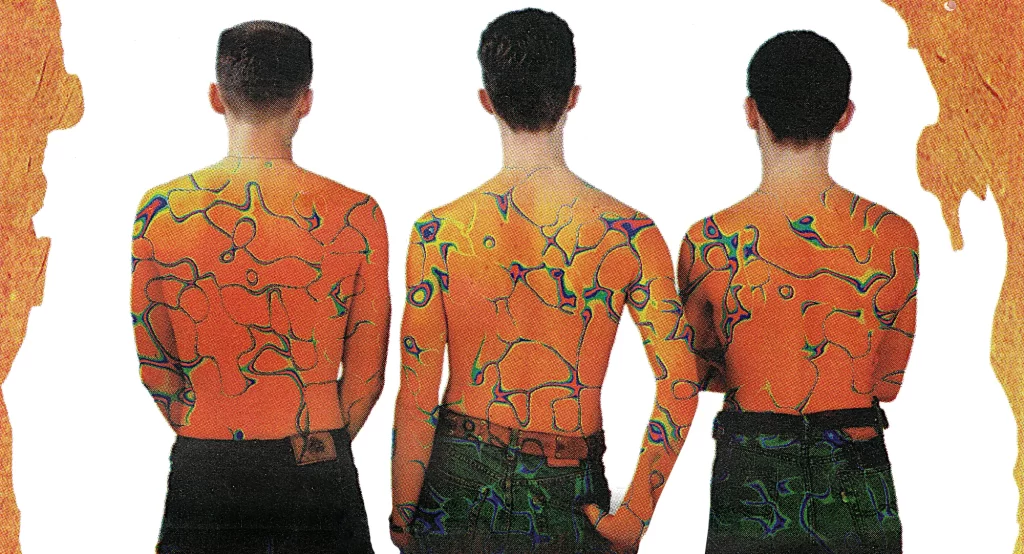
Aivaras, 2000–
In September 2000, I was invited to perform with the Lithuanian State Symphony Orchestra (LSSO) conducted by Gintaras Rinkevičius at the concert tour, The Metamorphosis of Rock Classics. I sang Bohemian Rhapsody by Queen and was greeted with exuberant ovations and encore requests from the audience, while receiving accolades of praise from music critics who heralded the emerging young artist’s bright future. I began receiving numerous invitations to tour Lithuania.
In June 2001, I signed a recording and performing contract with the label Cool Production. This moment marked the official beginning of my solo career.
In December 2001, I joined the LSSO for a second time to participate in the follow-up tour, The Metamorphosis of Latin American Rhythms, putting my distinctive singing technique to good use while performing Madonna’s La Isla Bonita and George Michael’s and Astrud Gilberto’s duet Desafinado, this time in tandem with the Lithuanian R&B star Arina.

In December of the same year, I recorded the song Happy You for the Lithuanian national finals of Eurovision 2002, in which I was voted second place. A month before the final concert in Tallinn, the first-place winners were unexpectedly disqualified, and I was delegated to represent Lithuania at the Eurovision Song Contest 2002 in Tallinn, Estonia.
In the spring of the same year, my debut album, Aivaras, was released by Cool Production in collaboration with Jam Records (Vilnius, Lithuania).
I was literally working and sleeping in the recording studios those days. In 2003, I finished composing and recording my second solo album, Myliu arba tyliu (I Love or I Say Nothing), which was released by Prior Records (Vilnius, Lithuania) a year and a half later.
My audio engineering skills were slowly shaping up as I observed the process in the recording studios at which I worked. In 2005, I finally decided to build my own studio, Garsų menė, and embarked on a successful career as a mixing and mastering engineer. My work was—and still is—aired on all the major Lithuanian radio and TV stations.
In the same year, and more importantly, in my own studio, I started composing and recording my third solo album, Sage & Fool. No longer taking an active part in the performing scene of Lithuanian pop music, I had all the time, the pleasure, and the means to pursue the sound the way I envisioned it. Sage & Fool was my first album in which almost everything—themes, moods, and timbres—started sounding the way I envisioned it. The album took me a total of five years to complete and was released in 2010 by Kranto studijos (Kaunas, Lithuania).
In the ensuing period of 2012–2017, I was preoccupied with the music business, working at Garsų menė on a catalog of synchronization music and licensing it in international markets. Simultaneously, I developed new ideas and methods of recording sound.
Lastly, in December 2018, I began recording my fourth solo album, Ragana (The Witch). It’s coming out well, even if slowly. I’ve grown to like it that way, though.
